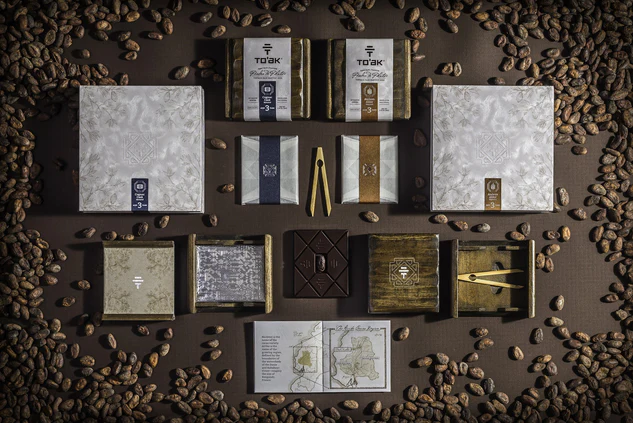Carl, Dennise, and I first created To’ak without thinking about pricing. Our goal was to make chocolate in a way that had never been done before, well beyond the traditional role of chocolatier. More specifically, we wanted to shatter the 20th-century perception of chocolate as mere candy. We like to say that our mission is to elevate chocolate onto the level of vintage wine or aged whisky, but this doesn’t fully express what we’re trying to do. As usual, there is more to the story than a catchy one-sentence mission statement can capture.
How Expensive Chocolates Became Mere Consumables
People often overlook the fact that chocolate was considered sacred by almost every single culture it touched for thousands of years. It was a delicacy reserved for priests and warriors and royalty, and in some cultures it was even used as currency. According to written records, the price of a hand-woven blanket in the Aztec kingdom was 100 cacao beans. At the commodity price for cocoa beans, this equates to $0.23 for something that took over 160-320 hours of labor to produce.

The exalted value of chocolate didn’t fundamentally change until the 20th century, with the advent of industrial food production. Like so many other things we eat, chocolate was cheapened by mass production. Dominated by milk chocolate varieties, it became synonymous with cheap candy bars—a quick fix of sugar and powdered milk and a medley of chemicals that nobody can pronounce, mixed with a bit of low-grade cacao solids. And people quickly became used to chocolate as a cheap, sugary confection.
The global consumer, embedded with a sense of entitlement for easy access to bargain products of all kinds, came to expect an unlimited supply of chocolate with a low price tag. Hamstrung by consumer expectations—or, failing to challenge those expectations—the massive chocolate companies of the world were and still are forced to ruthlessly cut costs. Faced with tiny margins, they responded by pumping out high volumes in order to generate a profit. Cacao was now reduced to a commodity, and chocolate became a mere “consumable.”









